Contents

Knowing how to get started in business is hard for any non-business people, including doctors and other allied healthcare professionals.
Trying to validate your business idea can seem impossible.
Don’t know what types of business are the best for doctors to start with? Check out our business ideas for doctors and a more analytical approach, business opportunities for doctors.
We don’t want to make a big mistake, so we end up doing little or nothing at all.
Anyone who is interested in entrepreneurship runs into Doubt #1 pretty quickly. It can be phrased in many ways, but usually sounds something like:
- Is this even a good idea?
- Will anyone actually want to buy this product or service?
- What does a ‘good’ or ‘bad’ business idea even look like?
- Am I about to invest time and money into something stupid?
These questions are enough for some people to give up completely.
But if you have these worries, you are not alone. Every founder and business owner will hear these nagging questions at some point.
Fortunately, it isn’t complicated or time consuming to lay the groundwork for validating your business idea.
Below I outline ‘fast and free’ steps you can take. Follow them to make sure your business idea is pointing in the right direction.
Remember, this isn’t going to validate your complete business model, but it will give you a strong indication about the need and desire for your proposed product or service.
Google is your friend
With over 90% market share for search, Google is where we will begin.
Understanding how many people are searching for your niche every month is a basic but fundamental way of knowing market demand.
There are a few ways of using Google, but we are looking to know how many people are searching, what related questions they have, and what is already available on the market.
Step 1: Know Thy Enemy
Let’s assume you’re an orthopaedic surgeon that wants to reduce clinical hours and build a side business.
You teach already in your clinical career, and have heard from junior colleagues that their arthroscopy skills are lacking.
You have a feeling this is a problem nationally, and think you could create an excellent course.
But what if everything can be found online for free? What if there are already 10 major players dominating the market?
Simply type your proposed product or service into Google and look at the top results.
- Does your proposed business already exist? (probably!)
- Are big brands running the show?
- What does their offer look like?
- How much does it cost?
This is what we see using our example:
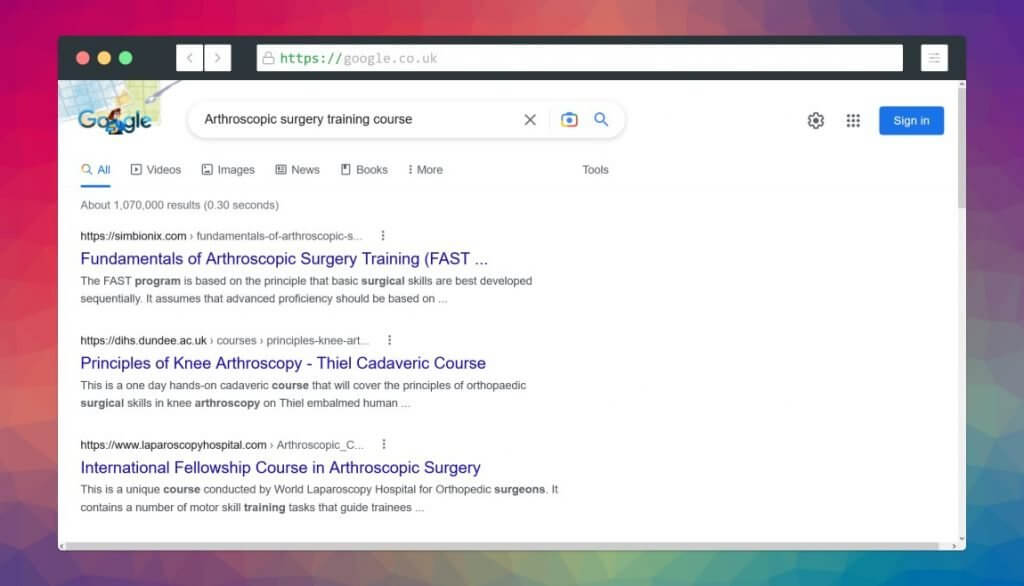
People usually think they don’t want to find out someone is already doing the same thing.
This is wrong.
Existing businesses prove there is enough demand.
No competition may mean you are first out of the gate, but more often means many have tried and failed before.
What you don’t want to find is a single, mature vendor controlling 99% of the market. It’s much more promising to find multiple, poorly put together offerings that you think you can beat on some angle.
That could be quality, speed, efficiency, price or any other differentiator.
Open up Google sheets and make a quick 2 column table of the top 5 Google results.
URL in column one, a brief analysis in column two. No need for minutiae at this stage.
Once you have a flavour of the ‘competition landscape’, it’s time to move onto Step 2.
Step 2: Know Thyself
Anything typed into Google is a keyword.
‘Shoes’ is a keyword.
‘Best waterproof red shoes for hiking in winter’ is also a keyword.
Google runs on keywords – but uses ‘semantic search’.
This means it tries to understand the meaning and intent behind a search. Not simply matching your query word for word to a website.
Now we have looked at the competition, now we want to know the size of the market. That is, how many people are searching for your main keyword every month.
There are plenty of expensive and complicated tools out there, but for now let’s use ahrefs’ keyword generator.

Our example surgeon will see these results:
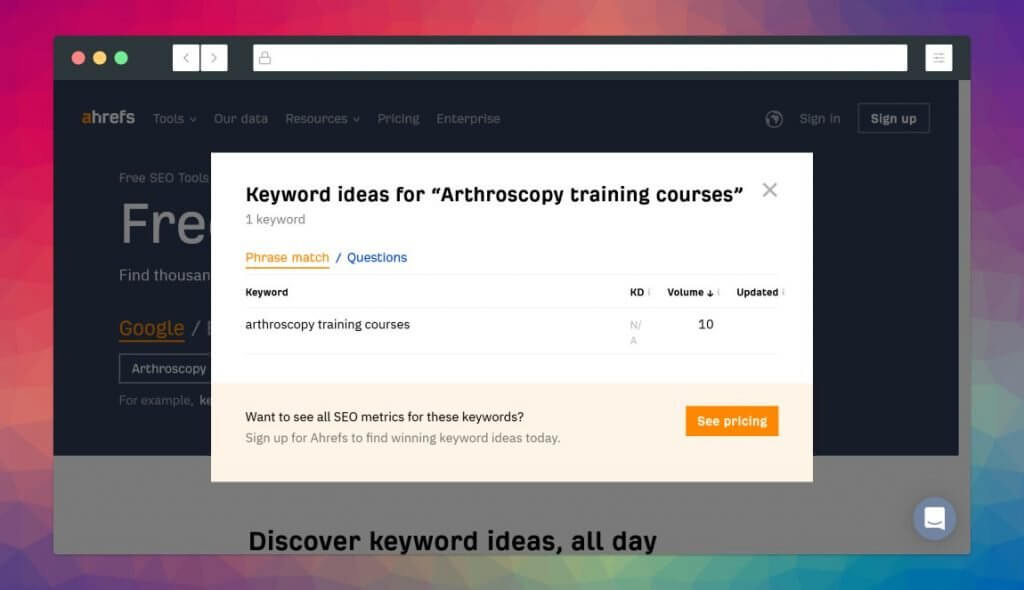
Only 10 searches a month in the whole of the U.K.?
Disaster!
Or is it?
Step 3: Understand the Iceberg
Just like the captain on the Titanic, keyword tools are just seeing the tip of the iceberg.
Even paid tools costing $99+/month have this problem.
Fortunately we have other tools at our disposal.
1) Common sense – could all these companies on page 1 of Google really survive on 10 potential customers between them?
No.
2) Keyword variations Instead of typing ‘arthroscopic surgery training courses’ we can try ‘arthroscopy training’, ‘arthroscopy courses’, or any other sensible variation. As a general rule, shorter keywords tend to have higher monthly search volume than longer keywords.
3) SearchResponse.io
SearchResponse.io is a handy tool for quickly analysing Google search results pages. It pulls together:
- What people also ask
- What people also search for
- Related Searches
Below we are looking at what people also search for when looking for arthroscopy courses:
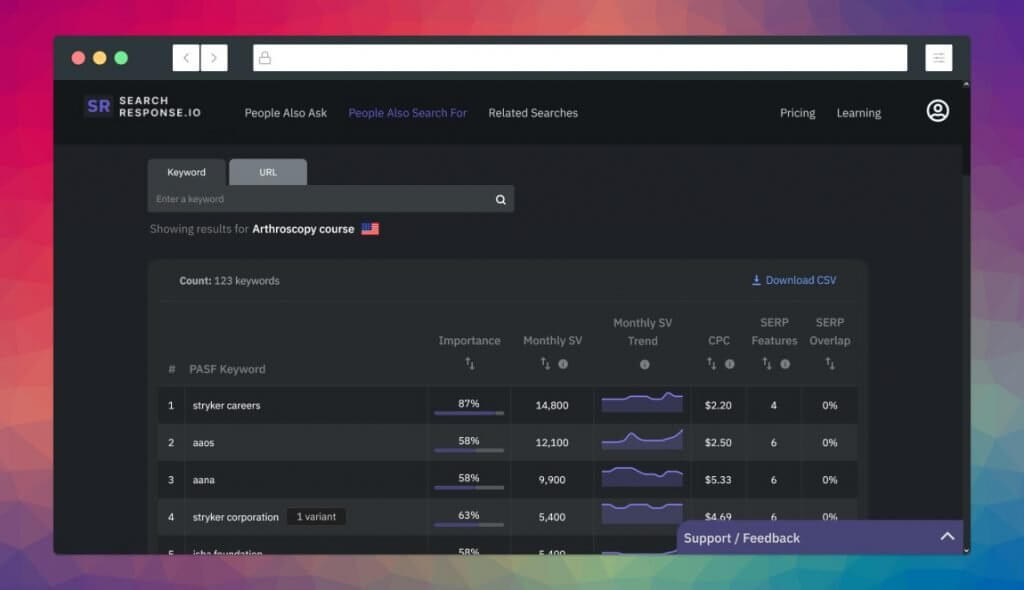
Not all of these are relevant to our needs, but scrolling down I can see that 260 people a month search for ‘shoulder arthroscopy anatomy’ when searching for ‘arthroscopy courses’.
Knowing the most searched for related keywords gives us some granularity; i.e. we know what should likely be our focus.
We can then put the new, related keyword back into the search to give us even more ideas:
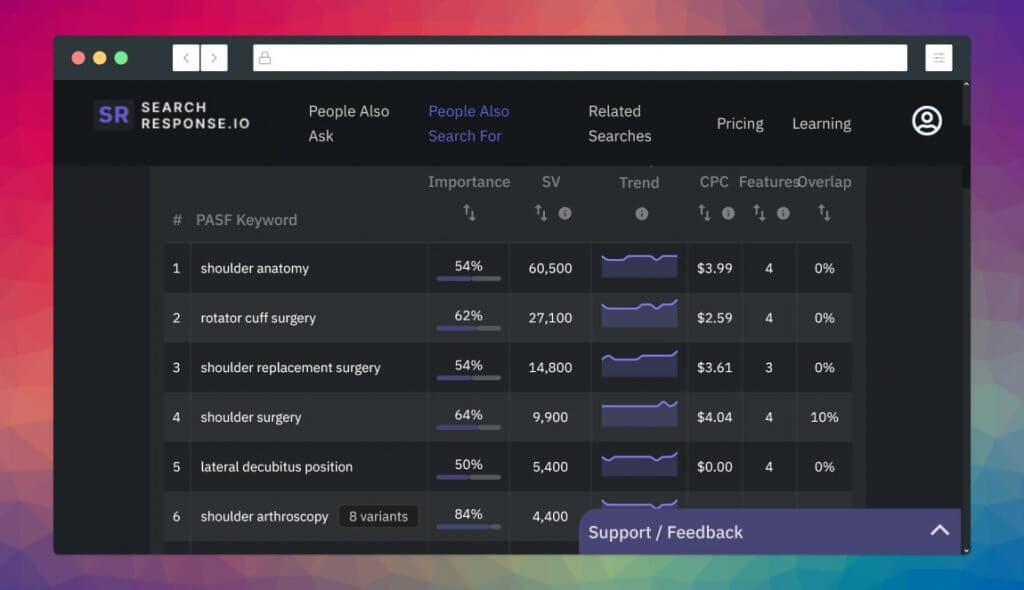
Finally we get some more concrete numbers to go on.
We barely get any results for our course keyword, but related searches show us 60,000 people per month are looking up shoulder anatomy.
Not all of these will be doctors, or doctors who might benefit from an arthroscopy course, but it gives us a good indication relative to other keyword volumes we find.
This keyword can also be transferred across to related searches:
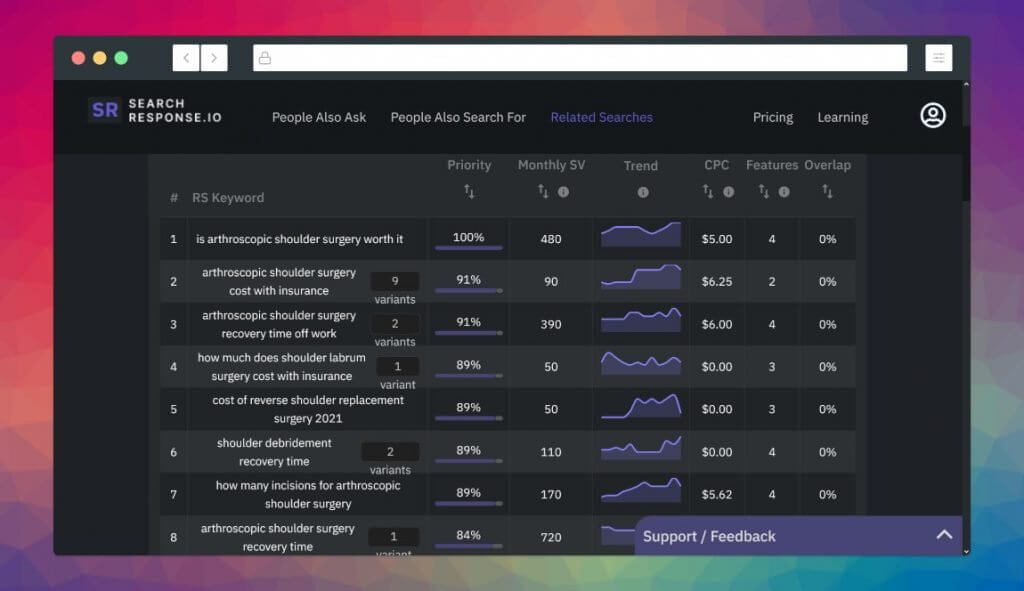
Note down all relevant keywords in your Google sheet or Excel file.
Step 4: Review the Landscape
Our imaginary surgeon who wants to create an ‘arthroscopic surgery training course’ now has a rough outline of the market online.
Follow these steps for your own business idea and you will know:
- Who the main players are
- What their offerings look like
- How competitive the market seems
- How many people look for your proposed product or service every month
- What sub-topics within your niche are most important to the market
All of the above can be achieved in less than one hour and provide a solid foundation for the rest of your market research and business validation.
Now that you have surveyed the market from a bird’s eye view, the next step is to actually speak to your target market!
🤝 Thanks for reading
Thanks for reading! This was orginally part of the NeuroFuse newsletter. If you enjoyed this, please share it on Twitter. If you’re interested in entrepreneurship, sign up here for the NeuroFuse newsletter, sent every Monday.
